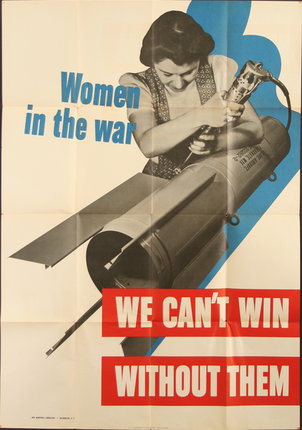Narrow your results
During World War II there was a change in the image of women, but it was only superficial and temporary. The reality was that most women returned to being homemakers during the prosperity of the 1950s. However, the road taken by women in the work force during World War II continued into the future. Society had changed. The daughters and granddaughters of Rosies continued on the road blazed by their mothers and grandmothers. Before the United States entered World War II, several companies already had contracts with the government to produce war equipment for the Allies. Almost overnight the United States entered the war and war production had to increase dramatically in a short amount of time. Auto factories were converted to build airplanes, shipyards were expanded, and new factories were built, and all these facilities needed workers. At first companies did not think that there would be a labor shortage so they did not take the idea of hiring women seriously. Eventually, women were needed because companies were signing large, lucrative contracts with the government just as all the men were leaving for the service. Working was not new to women. Women have always worked, especially minority and lower-class women. However, the cultural division of labor by sex ideally placed white middle-class women in the home and men in the workforce. Also, because of high unemployment during the Depression, most people were against women working because they saw it as women taking jobs from unemployed men. The start of World War II tested these ideas. Everyone agreed that workers were greatly needed. They also agreed that having women work in the war industries would only be temporary. The United States government had to overcome these challenges in order to recruit women to the workforce. Early in the war, the government was not satisfied with women's response to the call to work . The government decided to launch a propaganda campaign to sell the importance of the war effort and to lure women into working. After the war, the cultural division of labor by sex reasserted itself. Many women remained in the workforce but employers forced them back into lower-paying female jobs. Most women were laid off and told to go back to their homes. After the war, the cultural division of labor by sex reasserted itself. Many women remained in the workforce but employers forced them back into lower-paying female jobs. Most women were laid off and told to go back to their homes.

